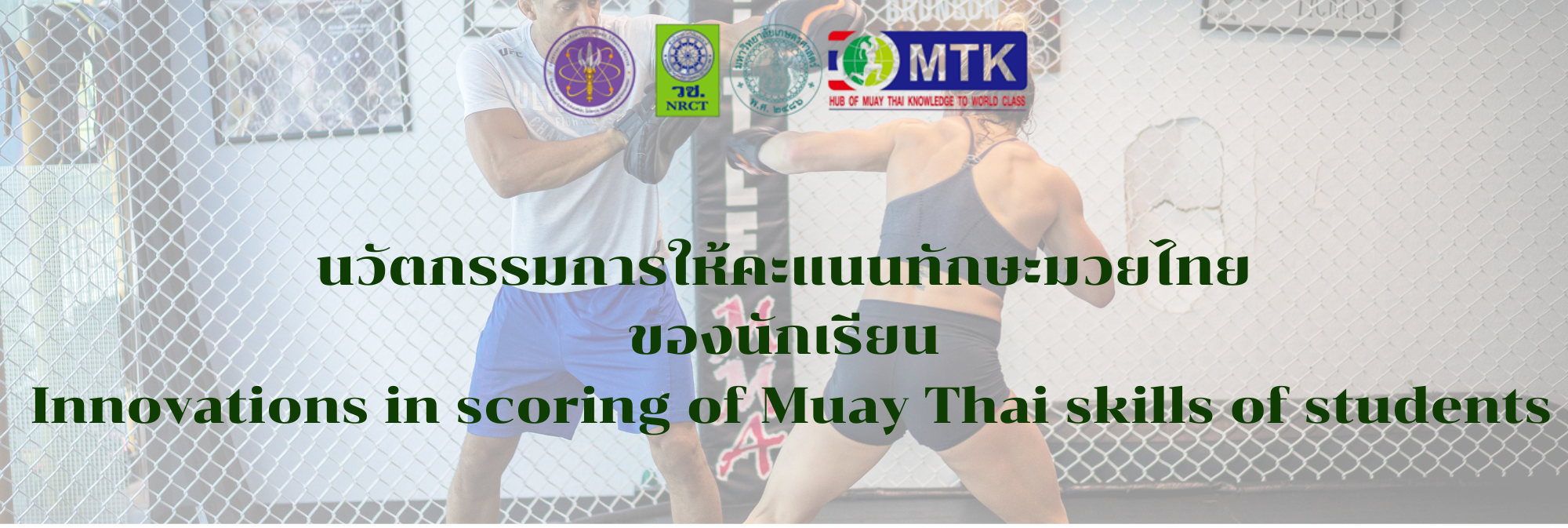
Innovations in scoring of Muay Thai skills of students
Introduction: The document presents a comprehensive overview ofan innovative scoring system designed for Muay Thai, aiming to enhancethe measurement of skill and performance in the sport. It It includes detailed sections on the equipment used, the methodology for implementation, expert evaluations, and guidelines for participants during testing.
Bevelopment of Equipment and Programming
1. Materials and Equipment:
- Load Cells: Five load cells are used to capture the impact force during testing.
- Signal Amplifiers: These amplify the signals from the load cells to ensure accurate readings.
- Analog-to-Digital Converter: Converts analog signals from the load cells into digital format for processing.
- Microcontroller: Serves as the processing unit for evaluating the incoming data.
- Display Circuit: Shows the results of the scoring system.
- Punching Bag: The primary testing target where participants deliver strikes.
2. Construction Process:
Equipment Components:
- Punching Bags: Specific types are designed to withstand impact.
- Protective Sear: Includes shin guards specific to Muay Thai.
- Load Cell Assembly: Involves connecting the load cells to wiring systems.
- Impact forytion Pods These affised to punding bag to manage fores.
3. Testing Guidelines:
- The innovation should be positioned at a height suitable for participants.
- Participants must maintain a one-arm distance from the stationary target.
- Protective gear Igloves, shin guardsl must comply with Muay Thai competition regulations.
- A thorough explanation of the testing process is provided to participants to ensure clarity and understanding.
Methodology:
- Target areas on the punching bag include the jaw, stomach, and thighs for impact sensing.
- The load cells are installed strategically to gather data from the specified areas.
- A rubber mat is placed over the punching bag to ensure stability during testing.
- A stablind saitsty tests conductore fore fniihe emby.
Test duration 60 seconds

Quality of Tools
1. Expert Evaluation:
- The document includes a feedback formintended for experts to assess the scoring
system's effectiveness.
- Evaluators are asked to mark their opinionson the scoring system's relevance, methodology,and overall effectiveness.
- Index of Consistency (IOC): A table summarizes the IOC for each evaluation criterion, showing high reliability with values of 1.00 for most items, indicating strongalignment with intended objectives.
2.Quality Assurance Process:
- A list of experts involved in the quality assessmentis included, showcasing their positions and affiliations with educational and sports institutions, ensuring credibility in the evaluation process.
User Manual
1. Operational Instructions:
- The user is instructed to connect an adapter to the display unit and supply power.
- Upon starting the program, the system will display readiness and guide the user through the scoring process.
- Test scores will be displayed, with a maximum score of 10 points.
- Instructions for resetting the system for subsequent tests are included.
2. User Competency Requirements:
- Users need a basic understanding of the scoringinnovation and prior experience or knowledge in Muay Thai to operate the system effectively.
- The manual emphasizes the importance of users being informed about the underlying principles of the scoring system.
Load Cells have 5 points: the
tip of the chin, the temples, the
epigastrics, and the crook of
both legs.
Conclusion
The document provides an in-depth look the develooment and implementation of an innovative scoring stem for Rhay Thai ltnaddressss the technical specifications of the equipment, the methodologies employed for testing, and the processes for ensuring quality and reliability. By emphasizing expert evaluation and user guidelines, the scoring system aims to enhance the training, assessment, and performance standards in Muay Thai, ultimately contributing to the sport's growth and the athletes development. This structured approach not only aids in accurate skill measurement but also fosters a deeper understanding of the sport among practioners and trainers allike.
Presented by:
Assoc. Prof. Dr. Sobsan Mahaniyom
Asst. Prof. Dr. Narong Wichairat
Asst. Prof. Paisan Sukkasem
Shinawatra University
